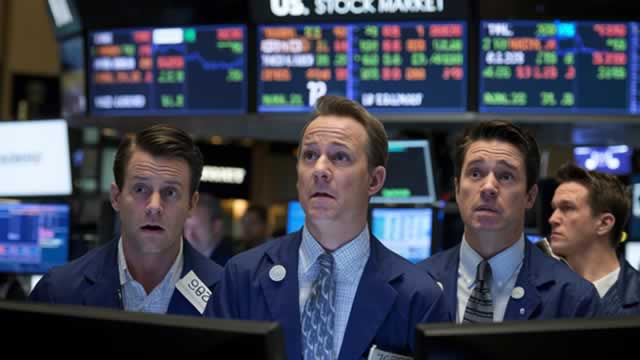Stock Market Volatility: Navigating the Uncertainty Amid Tariff Wars
The stock market experienced a rollercoaster ride last week, with the Nasdaq Composite index taking a hit of up to 2.5%, only to close 1.2% lower. The Dow Jones Industrial Average and the S&P 500 also saw significant declines, albeit more moderate ones. The primary catalyst for this market turbulence was the ongoing trade tensions between the world’s two largest economies: the United States and China.
Tariffs: The Root Cause
The escalating trade war between the US and China has resulted in a series of tariff increases on both sides. In mid-September, the US imposed 15% tariffs on approximately $112 billion worth of Chinese imports. China retaliated by imposing tariffs on $75 billion worth of US goods. These latest rounds of tariffs followed earlier rounds in 2018 and 2019, with the total value of goods affected by the tariffs now topping $550 billion.
Market Reaction: Initial Panic and Subsequent Recovery
Initially, the stock market reacted negatively to the news of the new tariffs. Investors, fearing the potential economic consequences of the trade war, sold off stocks, contributing to the significant market declines. However, as the week progressed, the market began to recover, with some investors viewing the tariffs as a necessary step in the ongoing negotiations between the US and China.
Impact on Consumers and Businesses
The ongoing trade tensions and resulting tariffs could have significant consequences for both consumers and businesses. For consumers, higher tariffs could lead to increased prices on a variety of goods, from electronics to clothing. For businesses, the tariffs could result in increased production costs, potentially leading to higher prices for consumers or reduced profitability.
Global Economic Consequences
The trade tensions and resulting tariffs could also have far-reaching economic consequences. Some analysts predict that the ongoing trade war could lead to a global economic slowdown, as trade between the US and China is a significant contributor to the global economy. Furthermore, other countries may be forced to take sides in the trade dispute, potentially leading to further trade disruptions and economic instability.
Bracing for Uncertainty: What Can Investors Do?
Given the uncertainty surrounding the trade tensions and resulting tariffs, what can investors do to protect their portfolios? One strategy is to diversify your holdings across different sectors and asset classes. This can help minimize the impact of potential downturns in any one sector. Additionally, staying informed about global economic developments and market trends can help investors make informed decisions and adjust their portfolios accordingly.
Conclusion: Staying Calm Amid the Storm
The ongoing trade tensions between the US and China have resulted in significant market volatility, with the Nasdaq Composite experiencing a 2.5% decline at its worst point, only to close 1.2% lower. The tariffs imposed by both sides have the potential to impact consumers, businesses, and the global economy in significant ways. However, it’s important for investors to stay calm and informed, and to consider diversifying their portfolios to minimize risk. As always, it’s a good idea to consult with a financial advisor for personalized advice and guidance.
- Stock market experiences significant volatility due to ongoing trade tensions between US and China
- Nasdaq Composite falls as much as 2.5%, but closes 1.2% lower
- Tariffs lead to increased uncertainty, potentially impacting consumers, businesses, and the global economy
- Diversification and staying informed can help investors navigate market volatility





